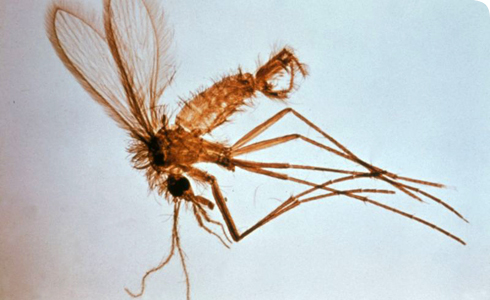Taxonomy
Phlebotomus papatasi was the first sandfly to be described.
It was originally described:
- in 1786 as Bibio papatasi Scopoli
- from near Milan in Italy (Lewis, 1982)
The species name comes from the vernacular Italian ‘pappataci’, meaning a silent gorger.
Like many old species, its taxonomy has often been revised (Seccombe et al., 1993). This is important because it is the type species of Phlebotomus and, like many species in this genus, transmits protozoans and arboviruses causing human and mammalian diseases (Ready, 2008).
Morphology
- Small scaly fly only about 3mm long.
- Male characterised by the species-specific morphology of the claspers used to hold the female during mating.
- Only the female has a proboscis for cutting mammalian skin and sucking the subcutaneous blood released from capillaries.
Lookalikes
P. papatasi resembles a dainty, tawny version of the moth flies or owl flies (also in the family Psychodidae) that frequent damp bathrooms and outhouses in Europe. All hop out of the way if disturbed, but only the sandfly usually sucks blood and rests with its pair of wings half open, not fully open.
Phlebotomine sandflies are not usually found on tropical beaches, where small biting midges (ceratopogonid sandflies) can be a nuisance.
-
Evolution
The history of sandflies dates back around 120 million years. Learn more about the evolution of Phlebotomus papatasi and the genus it belongs to.
Toolbox
Glossary
Phlebotomine sandflies belong to the subfamily Phlebotominae (within the fly family Psychodidae).
Ceratopogonid sandflies belong to the fly family Ceratopogonidae.
